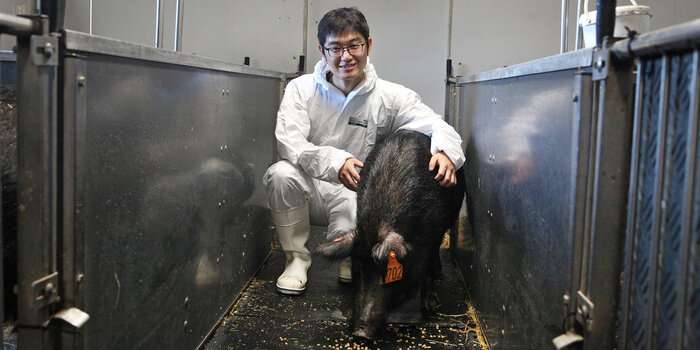

Mapping of the complete genome of the obesity-prone Ossabaw pig gives new hope for further insights into human obesity and associated diseases
For the first time in history, researchers at DTU Bioengineering and DTU Health Tech in collaboration with researchers in China and the US have mapped the complete genome of the exceptional Ossabaw pig. Important data, which is now freely available to the research community for further investigation.
The Ossabaw pig is generally regarded as the most complete and most human-relevant obesity model available, including the very complex mechanisms linking obesity with irreversible, serious obesity comorbidities, such as type 2 diabetes, cardiovascular diseases and cancer.
These relevant disease mechanisms makes the Ossabaw pig useful for understanding human obesity, as it is similar to and therefore can be translated to human conditions.
The origin of the Ossabaw pig’s tendency to obesity and obesity comorbidities lies within its more than 500 years of natural evolution in isolation on the Ossabaw Island off the coast of Georgia, U.S., where food supply is highly variable. This setting is similar to the way the ‘feast’ (food surplus) and ‘famine’ (food scarcity) environment is hypothesized to have shaped the human genome in early human history. The genome of the Ossabaw pig is therefore of considerable interest.
“The complete mapping of the genome provides a unique possibility to identify genes that are different from the genome of common, lean breed of pigs and therefore may be related to the obese phenotype, indicating obesity mechanisms, biomarkers and targets for treatment. We now have a human-translatable genomic blueprint for the very complex state of obesity-associated disease,” Professor Peter M.H. Heegaard, DTU Health Tech, says. “This will consolidate the use of the Ossabaw pig as the obesity model of choice and we are excited to be able to provide European collaborators with DTU Ossabaw pigs in the coming years.”
“Whole genomic information is extremely important for identifying genetic changes that drive formation of unique features for species and tracing diseases. The Ossabaw genome will provide a valuable resource for studying obesity related metabolic syndromes in the future,” Ph.D. Student Yaolei Zhang, DTU Bioengineering, explains, when asked about future perspectives derived from his work.
Source: Read Full Article